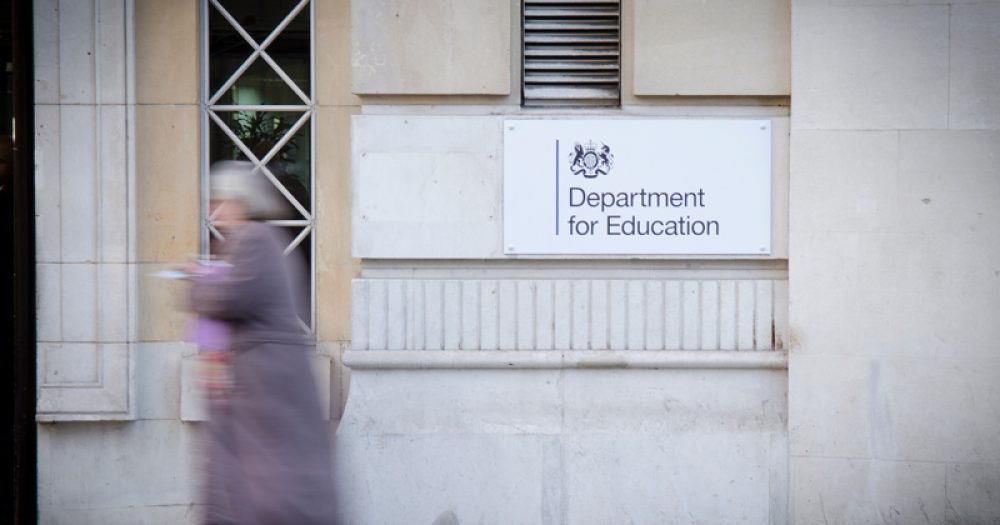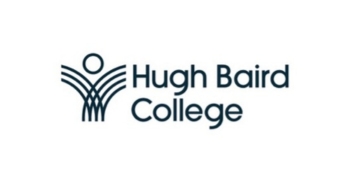Government statistics today have revealed the proportion of pupils with special educational needs and disabilities has risen for a third consecutive year.
The data shows that, as of January, there were 1,318,300 pupils with SEND in England, representing 14.9 per cent of the total pupil population. Here’s five key findings from the stats.
1. Number of SEND pupils rises for third year running
The proportion of pupils with special educational needs and disabilities (SEND) has risen for the third year in a row.
As of January 2019, there were 1,318,300 pupils with SEND in England, representing 14.9 per cent of the total population. This is up from 1,276,215 (14.6 per cent) in January 2018 and 1,244,255 (14.4 per cent) in January 2017.
Between January 2010 and 2016 numbers had fallen from 1,704,980 down to 1,228,785.
The government said that the recent increase is driven by both a rise in the number of pupils with an Education, Health and Care (EHC) plans and an increase in those receiving SEND support.
In January, 271,200 pupils, or 3.1 per cent of the total pupil population, had an EHC plan, up from 2.9 per cent last year, and 1,047,200 pupils (11.9 per cent) are on SEND support.
The most common SEND support needs this year are speech, language and communication needs. Among pupils with an EHC plan, Autistic Spectrum Disorder is the most common type of special educational need.
2. Speech needs becomes most common SEND type
Across all pupils with SEND, the most common type of primary need is speech, language and communication needs, making up 22 per cent of all SEND pupils.
Last year it was moderate learning difficulty, which has decreased from 24 per cent to 20 per cent.
3. Autism still most common for EHC plan needs
Of those with an EHC plan, autistic spectrum disorder remains the most common primary type of need, with 29 per cent of pupils with an EHC plan having this primary type of need.
This is an increase from 28 per cent in January 2018.
4. But there’s been a rise in SEMH amongst primary pupils
The statistics show social emotional and mental health (SEMH) and moderate learning difficulty are more prevalent in older pupils.
However, analysis from children’s literacy charity the Driver Youth Trust found that there had been a rise in SEMH amongst primary pupils.
This year there were 108,979 incidences of SEMH in primary schools, which is 2.3 per cent of the total number of primary school pupils. Proportionally, this is an increase from last year’s 2.19 per cent. In 2015 the percentage of SEMH was 1.85 per cent.
Chris Rossiter, CEO of the Driver Youth Trust, said: “All the data indicates that we are seeing an increase of pupils having an identifiable SEN, particularly in primary. To meet this growing demand, the sector must be adequately equipped to effectively support these pupils.”
5. More SEND pupils being educated privately
Since 2011 there has been a steady decline in the proportion of SEND pupils being educated in state-funded secondary schools.
In 2011, 43.6 per cent of SEND pupils attended state secondary schools. As of January 2019, the figure was 34.2 per cent. This is a slight increase from 33.9 per cent last year.
Meanwhile, the proportion of SEND pupils being educated in private schools has gradually increased, with 7.1 per cent of all SEND pupils now attending independent schools compared to four per cent in 2010.
The majority of SEND pupils continue to be educated in state-funded primary schools. This year 56.9 per cent attended state-funded primary schools, which is a slight proportional decrease from last year’s 57.1 per cent.
Schools Week revealed in 2017 that a lack of state-funded places was forcing councils to spend hundreds of million of pounds for SEND pupils to attend private schools.
Local authorities blamed the shift in a lack of funds for new state places, leaving them unable to keep pace with the rising numbers of diagnoses.





At about 15%, the proportion of SEND pupils in our schools must be an under-estimate. The assumption of the 1981 Education Act was that 1 in 5 pupils had SEN. It is hard to believe that given the fall in standards brought about by the marketisation of the education system, less pupils are now presenting with SEND. The only feasible explanation must be that a high proportion of these must be unrecognised or ‘got rid off’ by the Academy Schools responsible for the off-rolling scandal that the DfE and OfSTED are doing their best to play down.
The truth is that there have been huge cuts in funding and support for children with Special Educational Needs (SEN)
On taking up my present junior school governorship, the greatest shock has been the dramatic reduction in SEN funding and provision, with the school largely having to fund such support from the delegated budget. The 1981 Education Act had brought about major reforms and to a considerable extent also triggered the resourcing needed to support the expensive Statementing system, and later following the 1988 Education Act, the Non-Statutory SEN element of LEA delegated budget funding formulae.
Read more about the serious abuses that are now taking place in our school system here.
https://rogertitcombelearningmatters.wordpress.com/2019/07/02/schools-should-be-genuinely-child-centred-part-1-special-educational-needs-and-safeguarding-are-connected/
I have been trying to get my son in to full time school for the last 3 years and tberes not enough specialists in the field or funding so he is 8 comming 9 and his ehcp still hasnt come back cahms are saying hes to complex to diagnose so now were back at the pediatritions with medication they dont no will work and blood tests its anoying as a parent with a child with needs when they dont get or dont have thr basic things they need 2 be able 2 excell at school and then its branded as the childs fault when its not its the health care system and schools who are not with not enough funding as its been spent elswhere me an my son have come from bottom 2 the top an he needs routine untill the propper channels are put in place and parents arnt fobbed off from one proffesional to tbe next sen children would then be able 2 excell in the things there good at my son loves music and games and space but wont give you the time of day if hes not interested people need 2 stop walking round with there eyes closed
I assume it can be shown empirically that standards have fallen, but can you please show the facts (not your personal opinion or hearsay) proving that this is solely the result of the “marketisation of the education system”.
However of rather more interest is your conflation of figures. The figure of 14.9% referred to above was arrived at following a detailed investigation.
But where does your statement “The assumption of the 1981 Education Act was that 1 in 5 pupils had SEN” come from? I’m presuming that the relevant publication is the Warnock Report from 1978. Far better informed people than me can comment on the state of understanding of SEN in 1978 compared to today, but I’m going to focus on this 20% figure that you set so much store on. Did the Warnock report say this?
Of course not. What it actually said was that “we recommend that the planning of services for children and young people should be based on the assumption that about one in six children at any time and up to one in five children at some time during their school career will require some form of special educational provision”.
So actually the report referred to a point-in-time figure of “about one in six” or “about 16.7%”. In the context of the real numbers referred to, the firm calculation of 14.9% over 40 years later doesn’t actually look that out of line.
Mark – The evidence you ask for can be found in this my analysis of PISA data published here.
https://rogertitcombelearningmatters.wordpress.com/2016/12/18/national-iqs-and-pisa-update/
This analysis has been endorsed by academics with international reputations. It has been viewed thousands of times in most of the countries in the world and remains to be challenged.
This is the relevant conclusion.
“So what can we say about the UK (49th) and USA (53rd) systems?
There is clearly very little to be positive about that is for sure. Even more depressing is that the frantic pace of reform is to be stepped up with more testing, more Academies and Free Schools, more faith schools with their own enhanced sectarian admissions rules and now the imposition of selective grammar schools. It would be hard to come up with proposals to make the national education system worse.
If you take the trouble to read the article you will find links to the supporting arguments and evidence.”
No, when I asked for evidence I didn’t want your opinion. I know your opinion. You don’t like academies and are prepared to twist any discussion into why something is the fault of academisation (like you did when you attempted to say that Steve Garnett’s support for isolation booths was because he had only worked in academies, not taking the time to realise he actually worked in an LA run community school – https://schoolsweek.co.uk/i-am-a-classroom-teacher-and-i-want-isolation-booths/).
What I wanted was independent evidence and analysis done by someone else. Trying to pass your own opinions and analysis off as “fact” isn’t really the way reputable academics behave. You don’t just put your own thoughts out there, get some like-minded academics who share your standpoint to agree with it, and then treat it as gospel.
Who are these “academics with international reputations”? It sounds like you’re insinuating this is a peer-reviewed paper, so please set out the process followed for choosing these individuals in order to ensure a valid independent process.
Otherwise it’s like Michael Gove publishing a paper and saying its been endorsed by Boris Johnson, Lord Agnew and Damian Hinds.
Don’t get me wrong, I’m all for people having their own opinions. It’s just when they try and say their opinions are facts and therefore everyone else is wrong that it sits funny.
The 1981 Education Act was triggered by the Warnock Report.
The following is from this Cambridge University Report authored by some of the most prestigious educationalists of the day.
https://www.teachers.org.uk/files/active/0/costs_of_inclus-pt1.pdf
I took up a headship in Cumbria in 1989. The Cumbria LEA’s SEN policy at the time had the title, ‘1 in 5 ‘. This was the universally accepted assumption in schools at the time.
Warnock’s finding that ‘one in five’ pupils would experience learning difficulties at some point during their time at school challenged earlier assumptions. Children with learning difficulties could no longer be regarded to exist within a ‘deficit model’ where experts were required to attempt a diagnosis and then prescribe appropriate treatment. Failure to learn was hereafter to be regarded as an interaction between what the child was able to bring to the classroom and the nature of the instruction provided by the teacher. Teaching such children could then be construed as a task for all teachers and not just experts.
It seems almost as though you’re intentionally missing the point here.
You said that the assumption of the 1981 Education Act was that 1 in 5 pupils had SEN, and that therefore the figure of 14.9% “must be an under-estimate”. (Note the casual use of the absolute word “must”.)
But this is just untrue isn’t it. The assumption was that “one in five children at some time during their school career will require some form of special educational provision”, but then crucially “one in six children at any time will require some form of special educational provision”.
I don’t care what Cumbria LEA’s policy was, it’s not like LEAs are founts of unchallangeable wisdom.
Can you please just acknowledge that what the Warnock Report said was the assumption should be that at any single point in time the number of SEN children should be about 16.7%?
Whether the 1 in 5 or 1 in 6 figure is most relevant depends on your point of view. 1 in 6 is a snapshot of SEN activity in schools. However from the standpoint of a student or parent the ability of the education system to cope effectively with the expectation that 1 in 5 school age students will need SEN help at some stage in their education is the key statistic.
It is frustrating that you never engage with the argument, preferring to seek to discredit the messenger. It is the strategy of the climate denial ‘fake news’ industry that tries to discredit climate scientists by alleging that they are motivated by lucrative attendances at international conferences.
You also miss the point that the current SEN figures do not include the thousands of pupils that are ‘got rid’ into home schooling or ‘alternative provision’ that is the subject of another of my recent articles – strongly supported by features in yesterday’s TES. News Editor William Stewart tweeted this.
” Off-rolling uncovered: This morning on @tes we have a series of articles from an investigation by revealing both some shocking details behind the growth in backdoor exclusions and new evidence on the extent of the problem.”
Moving on to your personal attack on me in relation to my website article that analyses PISA data, I make no claim to be an ‘academic’. I am however a well qualified and very experienced teacher and headteacher and that is the capacity in which I write as the author of my book and the articles on my website.
However, I communicate with internationally respected academics such as Professor Michael Shayer (google him), who confirmed that the methodology I use in my PISA analysis articles is sound. Michael Shayer and the late Philip Adey have had a huge impact on my educational thinking, my book and the articles on my website all of which stress the importance of cognitive ability/IQ in all aspects of education, and especially the overwhelming evidence that it is plastic and can be enhanced by the best kind of teaching and learning and inhibited by the worst. See
https://rogertitcombelearningmatters.wordpress.com/2018/09/22/definitive-research-that-shows-teaching-for-cognitive-development-can-permanently-raise-general-intelligence-in-pupils-of-all-abilities/
My PISA analysis articles draw on some of the statistical approaches used by Shayer. My professional background in relation to Cognitive Ability Test (CAT) data led me to my PISA analysis. The scatter chart in the article linking raw PISA maths scores with estimates of national IQs produces a very high correlation suggesting strongly that the variance in national PISA country scores is mainly driven by IQ rather than by differences in the effectiveness of national education systems – it is the same for the variance in school GCSE performance that is so misinterpreted by OfSTED and DfE.
However there are still real differences in the effectiveness of national education systems that be measured by comparing the actual country PISA scores with those predicted from the linear regression line. This is mainstream statistics that I am happy to discuss with you or anybody else that is seriously interested in the argument and the evidence.
However, if you are just a ‘troll’ then I will follow the advice of schoolgirl climate activist Greta Thunberg when asked ‘How do you respond to climate change deniers?’ She replied, ‘I don’t’.